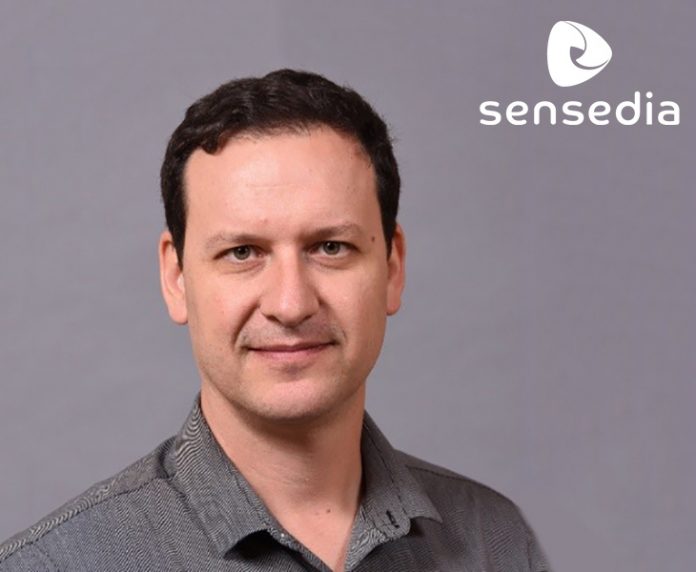Open banking offers businesses in the finance industry an opportunity to integrate their systems, using API management platforms from specialist third-party providers. One such provider is Sensedia, whose CEO and Founder, Kleber Bacili, explains the company’s evolution to date and highlights some industry trends to watch out for.
Good day, Kleber Bacili! Thank you for joining us today. Let’s start at the beginning. Would you mind giving us some background on why you founded Sensedia and sharing its history so far?
Thank you for reaching out to me.
I have a technical background in computer engineering. In fact, the first code I created was at age 12, when I wanted to manage the Formula 1 season. I was a huge fan of Ayrton Senna. That sparked a passion.
I founded Sensedia as an integration-focused technology company when service-oriented architecture (SOA) was becoming a valuable concept for the enterprise market. Initially, we learned how to work within complex integration environments. In 2013, we launched our API management platform to help organisations design, secure and deploy APIs to support mobile applications and external partners that need to connect to internal legacy systems.
Did you always envision the company would be a connectivity and integration platform supporting clients’ digital transformations? What were your initial goals for Sensedia when you started out?
We always wanted to help our clients streamline their application integration processes and be able to speed up their digital initiatives. At the time, we focused on the technical side of integrating applications and paid little attention to what was happening in relation to broader digital activity. The digital transformation journey has accelerated greatly in recent years and new technologies, such as cloud computing and the massive mobile presence, went mainstream and contributed enormously. We then realised that our expertise and technology was fundamental to our clients’ digital journeys.
From an internal perspective, before creating the API management platform, Sensedia’s business model was pretty much based on consulting. When we created our platform, we also adopted the software-as-a-service (SaaS) business model. In the beginning, it was very challenging, because a software subscription business has a totally different set of metrics – which we had to learn. On the other hand, the scalability and business potential is amazing.
It is no small feat that Sensedia has successfully transitioned itself from a humble start-up in 2007 to becoming one of the key global players in the field. It’s trusted by clients worldwide and was recently named the Best Open Banking Solutions Provider in the 2021 Fintech Awards. What kind of hurdles did you have to overcome as a company to get here?
When we look back, it is much easier to connect the dots, but at first we had to find a product/market fit that offered a scalable proposition. An API management platform combined with our expertise in integration was the answer.
We then had to earn the trust of our initial clients and create a resilient operation that could support mission-critical business.
Very soon, we learned the potential of the ‘open mindset’. Our very first open-banking project was in 2015, with one of the largest banks in Latin America. It never went live, and it was then that we learned that prioritising the business operation and addressing concerns around an ‘open’ environment are more important than technology.
We can only imagine how stressful it must have been to cope with the challenges of being a new player in this sector, but Sensedia offered unique and original services within an evolving digital landscape. Could you tell us how Sensedia’s multidisciplinary solutions contribute to this new ‘open’ world?
We were seen as pioneers – sector leaders – promoting the importance and power of APIs in Latin America.
Our goal was, and is, to ensure that our clients understand that technology is only one part of a successful API strategy and that they must align their business operation and strategy with a renewed mindset.
And this is why we give our clients comprehensive support; ranging from strategy sessions to help them understand why they need to invest in APIs and micro-services, to technical services, advising on best practice regarding API design and security.
What aspects did you take into consideration when developing integration solutions across diverse industries? Do you follow a one-size-fits-all method or do you work on a case-by-case basis?
Given that we work with such a broad range of clients across different sectors, covering various topics, there is no one-size-fits-all solution. There are, though, some similar cross-industry elements, for example techniques on how to secure and monitor APIs. Others are sector-specific, for example open-banking APIs and consent management usually follow specific recommended guidelines. And some are individual to each client, such as how to connect a specific API to a custom legacy application.
The development of the digital landscape has grown exponentially in the past decades. As the demands of the industry continue to change, how will Sensedia address these challenges and others yet to come?
Our technology is cutting-edge, so we’re very open to testing new components and technologies and we embrace failure as part of the technology development process.
Additionally, we’ll be investing more in technical alliances, particularly as most of our clients have a best-of-breed approach to implementing new technologies. It’s therefore becoming increasingly important to easily connect to and offer a broad range of specialist infrastructure solutions.
The company is involved in many digital disciplines, from API management to legacy integration. What would you say are the vital components of a truly modern multi-cloud framework for organisations today?
Organisations and enterprises going forward will need to take a ‘composable’ approach to their architecture. This means embracing a modular philosophy, adding new components to existing legacy systems and reinventing businesses so they become ‘composable enterprises’. This will maximise an organisation’s ability to build, assemble and reassemble core business elements, rapidly seize market opportunities and respond to disruptors and threats, while maintaining resilience.
The definition of compose is to ‘form by uniting parts’, and a modular strategy does just this; it allows businesses to connect to new ecosystems, exposing them to new markets and, eventually, new revenue streams.
In the short time since its launch, the company has managed to work with major names, including SOAINT. You recently announced a large-scale investment deal with Riverwood Capital, another respected high-growth equity firm. Would you mind telling us how this partnership was initiated?
Since its foundation, Sensedia has been a bootstrapped company and, so, very efficient in capital. In 2018, we started our international expansion, first to other countries in Latin America, then to Europe. In recent years, as the digital transformation accelerated pace, we saw an opportunity to speed up our expansion plan. In addition, the technology landscape is rapidly evolving and, in order to meet our current clients’ needs and create new products and services, we wanted to accelerate our product roadmap.
What can we expect from this alliance between Sensedia and Riverwood Capital in terms of driving geographic expansion, as well as digital transformation?
From a business perspective, we hope to expand more quickly into LatAm and Europe and have a greater presence in the United States. This new investment also enables us to extend our customer service and product development areas.
In just over two years, Sensedia has almost quadrupled traffic on its API platform. Were there any specific factors that contributed to this great achievement?
Sensedia is growing at an awesome pace. While we’re welcoming new enterprise clients, at the same time our current clients are moving forward in their digital journeys, particularly during 2020, when many physical experiences were replaced by digital interactions. This trend was reflected by the amount of API traffic using our platform.
For example, Iguatemi is a leading shopping centre administration company. It launched Iguatemi 360, a digital marketplace that allows customers to buy the same main brands they would when visiting their bricks-and-mortar locations. So, same client, new digital experience, much more API traffic.
Sensedia prides itself on not just being a catalyst for digital transformation, but also teaming up with like-minded organisations in its industry, as evidenced by this recent partnership. Are there any particular trends you’ve noticed within the digital sector?
We see a lot changing very fast – specifically three trends which we’re keen to help clients with:
(i) Accelerating digital transformation can, at the same time, create some architectural challenges. As the number of APIs and micro-services continue to grow, it’s crucial to have new governance elements in place to maintain consistency and increase resilience.
(ii) In a bid to become more agile and adaptable, companies are becoming more hybrid and multi-cloud. Being able to better handle services’ connectivity between on-premise applications to full SaaS, and manage how that evolves over time, is a key capability.
(iii) Open banking is a key step towards a more ambitious open-finance landscape. If we fully understand the drivers within the banking sector, we’re better placed to help clients maximise their potential in other ‘open’ sectors, as well (did I hear ‘open insurance’?).
You stress that Sensedia’s vision is to support a more open, connected and digital world through multi-cloud architectures. In a post-pandemic world, what do you believe are the steps the company, and society at large, should take in order to achieve this?
The trends I mentioned earlier relate to digital, connection and openness. Digital brings experiences to a much broader audience, so it’s related to ‘reach’. Connection makes the experiences data-rich, while openness allows us to blend those experiences and make them frictionless and more meaningful.
It would seem this partnership with Riverwood Capital is only the first of many great milestones for the company. What can we expect from Sensedia in the coming years?
We’re aiming to become one of the top API management players in the market and to continue to help our clients become more digital, connected and open, and enable them to thrive in the next chapter of their journeys.
For more information, please visit https://www.sensedia.com/






































